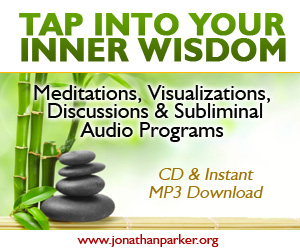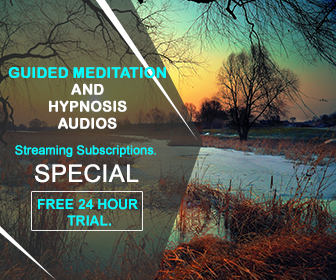Meditation is a practice in which an individual uses a technique – such as mindfulness, or focusing the mind on a particular object, thought, or activity – to train attention and awareness, and achieve a mentally clear and emotionally calm and stable state.
The earliest records of meditation (dhyana) are found in the Upanishads of Hindu philosophy, and meditation plays a salient role in the contemplative repertoire of Buddhism and Hinduism. Since the 19th century, Asian meditative techniques have spread to other cultures where they have also found application in non-spiritual contexts, such as business and health.
Meditation may significantly reduce stress, anxiety, depression, and pain, and enhance peace, perception, self-concept, and well-being. Research is ongoing to better understand the effects of meditation on health (psychological, neurological, and cardiovascular) and other areas.
HISTORICAL USE
The English meditation is derived from Old French meditacioun, in turn from Latin meditatio from a verb meditari, meaning “to think, contemplate, devise, ponder”. In the Catholic tradition, the use of the term meditatio as part of a formal, stepwise process of meditation goes back to at least the 12th century monk Guigo II, before which the Greek word Theoria was used for the same purpose.
Apart from its historical usage, the term meditation was introduced as a translation for Eastern spiritual practices, referred to as dhyana in Hinduism and Buddhism and which comes from the Sanskrit root dhyai, meaning to contemplate or meditate. The term “meditation” in English may also refer to practices from Islamic Sufism, or other traditions such as Jewish Kabbalah and Christian Hesychasm.
CLICK ON ABOVE GRAPHIC FOR MORE INFORMATION
MEDITATIVE PRACTICE
Meditation has proven difficult to define as it covers a wide range of dissimilar practices in different traditions. In popular usage, the word “meditation” and the phrase “meditative practice” are often used imprecisely to designate practices found across many cultures.
These can include almost anything that is claimed to train the attention of mind or to teach calm or compassion. There remains no definition of necessary and sufficient criteria for meditation that has achieved universal or widespread acceptance within the modern scientific community.
In 1971, Claudio Naranjo noted that “The word ‘meditation’ has been used to designate a variety of practices that differ enough from one another so that we may find trouble in defining what meditation is.”. A 2009 study noted a “persistent lack of consensus in the literature” and a “seeming intractability of defining meditation”.
Dictionaries give both the original Latin meaning of “think[ing] deeply about (something)”; as well as the popular usage of “focusing one’s mind for a period of time”, “the act of giving your attention to only one thing, either as a religious activity or as a way of becoming calm and relaxed”, and “to engage in mental exercise (such as concentrating on one’s breathing or repetition of a mantra) for the purpose of reaching a heightened level of spiritual awareness.”
In modern psychological research, meditation has been defined and characterized in various ways. Many of these emphasize the role of attention and characterize the practice of meditation as attempts to get beyond the reflexive, “discursive thinking” or “logic” mind to achieve a deeper, more devout, or more relaxed state.
SCHOLARY DEFINITIONS
Bond et al. (2009) identified criteria for defining a practice as meditation “for use in a comprehensive systematic review of the therapeutic use of meditation”, using “a 5-round Delphi study with a panel of experts in meditation research” who were also trained in diverse but empirically highly studied (Eastern-derived or clinical) forms of meditation.
Other criteria deemed important [but not essential] involve a state of psychophysical relaxation, the use of a self-focus skill or anchor, the presence of a state of suspension of logical thought processes, a religious/spiritual/philosophical context, or a state of mental silence.
Some of the difficulty in precisely defining meditation has been in recognizing the particularities of the many various traditions; and theories and practice can differ within a tradition.
Taylor noted that even within a faith such as “Hindu” or “Buddhist”, schools and individual teachers may teach distinct types of meditation. Ornstein noted that “Most techniques of meditation do not exist as solitary practices but are only artificially separable from an entire system of practice and belief.”
For instance, while monks meditate as part of their everyday lives, they also engage the codified rules and live together in monasteries in specific cultural settings that go along with their meditative practices.
CLICK ON ABOVE GRAPHIC FOR MORE INFORMATION
FORMS AND TECHNIQUES
In the West, meditation techniques have sometimes been thought of in two broad categories: focused (or concentrative) meditation and open monitoring (or mindfulness) meditation.
Focused methods include paying attention to the breath, to an idea or feeling (such as metta (loving-kindness)), to a koan, or to a mantra (such as in transcendental meditation), and single point meditation.
Open monitoring methods include mindfulness, shikantaza and other awareness states.
Practices that use both methods include vipassana (which uses anapanasati as a preparation), and samatha (calm-abiding).
Direction of mental attention… A practitioner can focus intensively on one particular object (so-called concentrative meditation), on all mental events that enter the field of awareness (so-called mindfulness meditation), or both specific focal points and the field of awareness.
One proposal is that transcendental meditation and possibly other techniques be grouped as an “automatic self-transcending” set of techniques. Another typology divides meditation approaches into concentrative, generative, receptive and reflective practices.
The Transcendental Meditation technique recommends practice of 20 minutes twice per day. Some techniques suggest less time, especially when starting meditation, and Richard Davidson has quoted research saying benefits can be achieved with a practice of only 8 minutes per day.
POSTURE
Asanas and positions such as the full-lotus, half-lotus, Burmese, Seiza, and kneeling positions are popular in Buddhism, Jainism and Hinduism, although other postures such as sitting, supine (lying), and standing are also used. Meditation is also sometimes done while walking, known as kinhin, while doing a simple task mindfully, known as samu, or while lying down, known as savasana.
Some religions have traditions of using prayer beads as tools in devotional meditation.Most prayer beads and Christian rosaries consist of pearls or beads linked together by a thread. The Roman Catholic rosary is a string of beads containing five sets with ten small beads.
The Hindu japa mala has 108 beads (the figure 108 in itself having spiritual significance), as well as those used in Gaudiya Vaishnavism, the Hare Krishna tradition, Jainism and Buddhist prayer beads.
Each bead is counted once as a person recites a mantra until the person has gone all the way around the mala. The Muslim misbaha has 99 beads. There is also quite a variance when it comes to materials used for beads. Beads made from seeds of rudraksha trees are considered sacred by devotees of Shiva, while followers of Vishnu revere the wood that comes from the tulsi plant.
CLICK ON ABOVE GRAPHIC FOR MORE INFORMATION
STRIKING THE MEDITATOR
The Buddhist literature has many stories of Enlightenment being attained through disciples being struck by their masters. According to T. Griffith Foulk, the encouragement stick was an integral part of the Zen practice:
In the Rinzai monastery where I trained in the mid-1970s, according to an unspoken etiquette, monks who were sitting earnestly and well were shown respect by being hit vigorously and often; those known as laggards were ignored by the hall monitor or given little taps if they requested to be hit. Nobody asked about the ‘meaning’ of the stick, nobody explained, and nobody ever complained about its use.
Neuroscientist and long-time meditator Richard Davidson has expressed the view that having a narrative can help the maintenance of daily practice. For instance he himself prostrates to the teachings, and meditates “not primarily for my benefit, but for the benefit of others”.
Guided meditation is a form of meditation which utilizes a number of different techniques to achieve or enhance the meditative state. It may simply be meditation done under the guidance of a trained practitioner or teacher, or it may be through the use of imagery, music, and other techniques.
OUTCOMES
Because of the different combinations used under the one term, it can be difficult to attribute positive or negative outcomes to any of the various techniques. Furthermore, the term is frequently used interchangeably with “guided imagery” and sometimes with “creative visualization” in popular psychology and self-help literature.
It is less commonly used in scholarly and scientific publications. Consequently, guided meditation cannot be understood as a single technique but rather multiple techniques that are integral to its practice.
Guided meditation as an aggregate or synthesis of techniques includes meditation music, receptive music therapy, guided imagery, relaxation, meditative praxis, and self-reflective diary-keeping or journaling. All of which have been shown to have therapeutic benefits when employed as an adjunct to primary strategies.
Benefits include lower levels of stress, reducing asthmatic episodes, physical pain,insomnia,episodic anger, negative or irrational thinking, and anxiety, as well as improving coping skills, focus, and a general feeling of well-being.
CLICK ON ABOVE GRAPHIC FOR MORE INFORMATION
Want to learn more about The Human Psyche – Mind Or Soul – Center Of Emotions – then just click to find out.
Payseur Family History
Fritz Springmeier – Bloodlines of Illuminati
The Rothschild Dynasty
The Disney Story
The above four links open a new tab in Louis Payseur’s site.
Well-Being & CBD Oil – Curated Presentation
Shopping & Clothing – Curated Presentation
Accessories – Curated Presentation



















